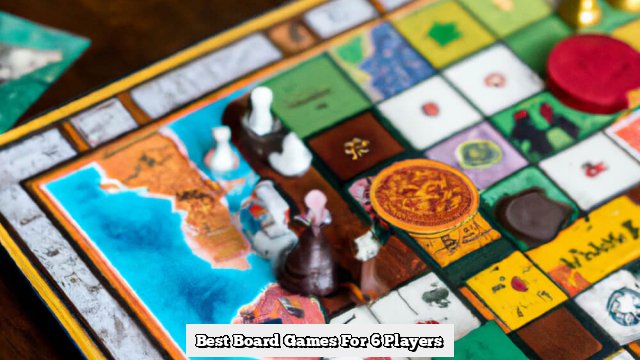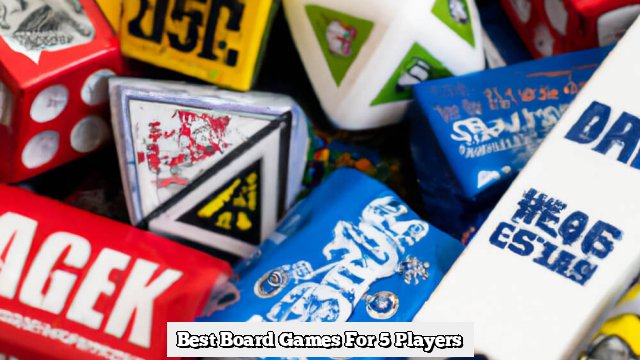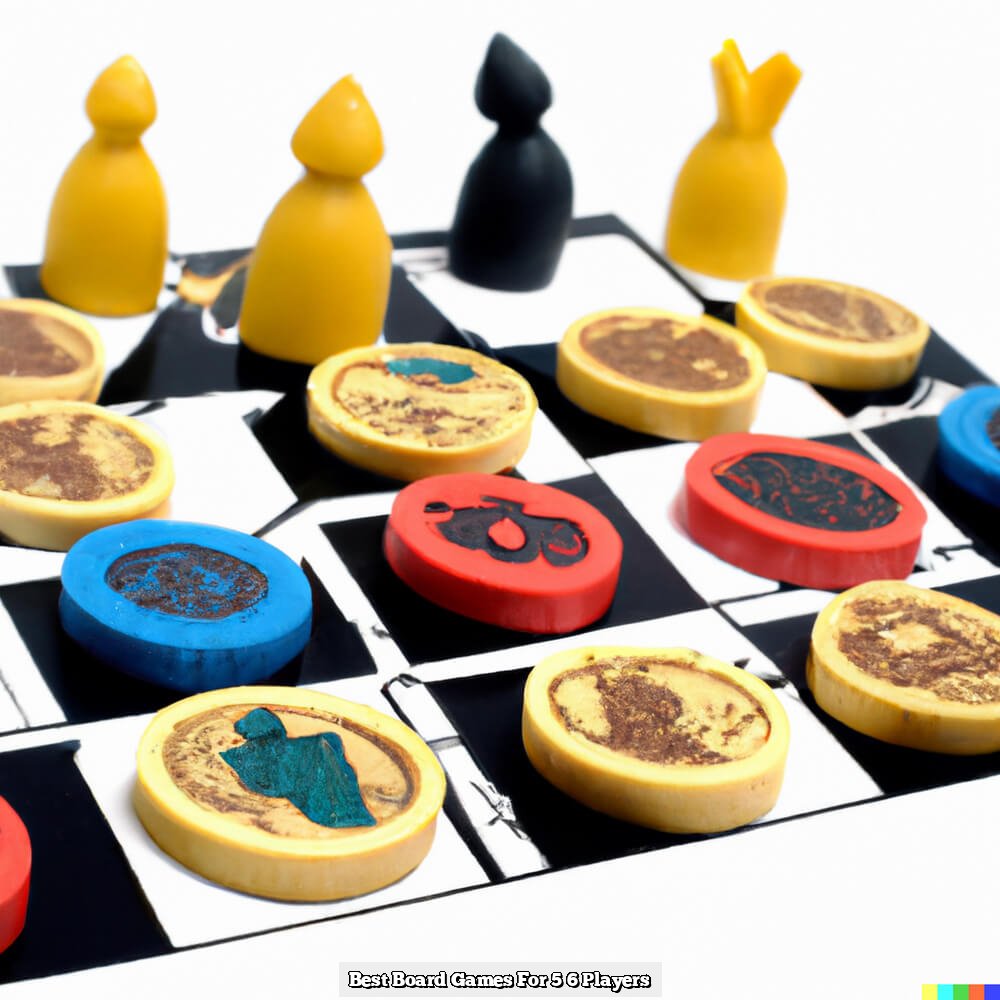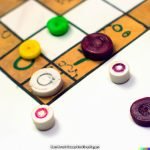Introduction
To make your own board game players, you’ll need to get creative with materials and colors. Start by choosing a figure or shape for each player and use foam, paper, wood or felt to cut out the pieces. If you’re using wood for your player pieces, be sure to sand the edges down for safety. Once the pieces are cut, it’s time to personalize them. You can give them faces (such as eyes, noses and mouths), clothes or accessories. If your game requires them to have certain abilities or traits that will determine their moves, you may need to design these features onto your players as well. You can also add colors and designs with fabric paints, markers or even glitter glue! Have fun being creative as this is what makes personalized board game pieces so special. Finally, attach some type of base (like felt circles) onto the bottoms of each piece so they move easily on a board while playing the game.
Design Inspiration
Making your own players for a board game can be an exciting and rewarding experience. Start by researching the genre of board game you’d like to make and exploring existing games similar in nature. Look at the type of pieces they use, pay close attention to the shapes, colors and overall aesthetic of each piece. Use this research as a starting point for creating unique and individualized designs for your game pieces. Additionally, look online for creative ideas from other makers or even use 3D modeling software for graphic design guidance. Visualise how you want each piece to look, keeping them interesting but consistent with one another. When selecting specific colors, think about how they work with one another on the board, or even choose a color palette from pre-approved color swatches around the web. Lastly, think about how each piece should interact with the board – decide upon which type of surface textures will provide an added level of engagement when playing your game.
Materials and Tools
Before you begin crafting your board game pieces, make sure you have the necessary materials and tools. First, determine the size and shape of your pieces based on the board game you are making. You may need cardstock for cards, or clay for figurines. Scissors or an X-acto knife can be used to cut shapes out of paper or foam board. Colored markers, paints, and other drawing materials are needed to give your pieces a unique look. Note that these materials should be listed in the instructions of any purchased kits so that you know what supplies you will need before starting. Additionally, having a hot glue gun is helpful for gluing certain materials together. Crafting pieces from scratch can be time consuming but takes your board game to the next level in terms of visual appeal.
Step-by-Step Guide
1. Gather Your Supplies: The supplies you’ll need to make game pieces vary depending on the type of game pieces you would like to create. If you are creating figurines, you will need clay or plastic along with any tools that may help with sculpting such as hand tools or clay cutters. If you are not creating figurines, you may use fabric, foam, paper and markers, wood, metal discs or washers, or cardstock/cardboard/etc. A ruler and craft knife for cutting materials may also be necessary.
2. Design Your Pieces: Determine what you want your game pieces to look like ” consider size, shape, and color scheme. Sketch this out in pencil on a piece of paper and create the pattern for each kind of game piece so that all the pieces are the same size and shape; this is important for a cohesive board game experience.
3. Cut Out Your Materials: If using fabric, foam, cardstock or cardboard cut out shapes according to your design sketches; if making figurines, begin molding and shaping with desired tools and materials (clay or plastic).
4. Decorate The Pieces & Add Details: After shapes have been cut out (or molded & shaped), now it’s time to add details! Depending on which material was used with Step 3 you can use fabric paint/markers/etc., glitter glue or enamel paint for molded/shaped figures – think about how to make creating personalized icons unique!
5. Attach Bases To Pieces: For extra stability when playing attach a wooden disc or washer to the bottom of each piece before putting them away ” some epoxy glue should do the trick if needed!
6. Enjoy Your Board Game!: Pilling up homemade game pieces on your board game is an amazing feeling indeed ” now all you have left is to decide who plays first!
Advanced Techniques
Details: To give your board game players that extra oomph, consider adding details to bring them to life. Think of small features like eyes, noses and mouths, clothing creases or fold lines, facial expressions and hairstyles, etc. Intricate engravings like jewelry on playing pieces can also add visual interest.
Paint: Applying a basic paint job to your players can dramatically lift the appearance of your board game. A wide variety of colors and effects can be used to further enhance the themes of your game – metallic accents for fantasy-themed games, bright colors for kids’ games, and solid colors for more traditional options. If you want to get really creative, painting an iconic symbol or graphical element on each player is another great way to make them stand out from the rest.
Finishes: To give your board game pieces a professional finish, consider using a finishing product like lacquer or shellac for a glossy look or antique wax for a vintage matte finish. Sealants can also be applied over painted pieces to help protect them against wear-and-tear during gameplay.
Accessories: Playing pieces don’t have to be just game pieces! Consider adding accessories like hats, swords and shields, wings, guns and swords…anything that goes with the theme of your game can make it even more exciting! Adding figures from popular movies or toy characters can also inject some fun into the gameplay experience.
Optional Features
One of the best ways to make your board game stand out is by creating unique and memorable players for it. Players act as central characters in a game, providing a context for interaction and enhancing game setup and playability. Here are some tips and tricks for making players that will really set your board game apart:
1. Use Imagination: Think outside the box when creating your players ” consider their personality traits, skills, preferred actions and individual looks. Make sure each character stands out from the others in some way ” use bright colors and interesting designs. Make sure to involve your players during design sessions or in playtesting so they can help shape the characters ahead of the big production launch!
2. Story Elements: You can bring each player alive by introducing story elements associated with them ” such as an interesting back-story or an unexpected goal or ambition. This adds extra depth to the game and gives players something to identify with when playing as their chosen character.
3. Special Abilities: Give each player special abilities or powers that reflect their overall style of play. Thematic abilities like city building or trading give a distinct advantage if used correctly! Rewards for successful completion of certain tasks are also great additions which encourage replayability and engagement with the game rules.
4. Assembling Parts: Try mixing parts from different characters to create totally new ones! Combine elements from classic board games such as Monopoly or Scrabble pieces into areas that most fit your theme ” maybe you want wizards casting spells instead of buying real estate? Or perhaps it’s pirates searching for buried treasure on islands instead of parking lots? What about combining card sets from other genres? It’s all possible – just let imaginations run wild!
Final Touches
When it comes to making players for a board game, the process involves setting up a piece for each one. These pieces can come in various shapes and sizes such as pawns or pawn sets of multiple colors, small two-sided figures representing each player, or collectible figurines that match the theme of the game. Once the pieces are chosen, you’ll want to make sure they’re easy to grab and keep track of during gameplay. A great way to do this is by assigning each piece a color or number that corresponds with its owner so everyone knows who is playing which character.
Once the pieces have been decided upon and identified, it’s time to start setting up the game on the board. First look at all of your pieces and imagine how you’d like them to appear once placed on the playing surface. Each player needs an adequate amount of space; if possible, map out where each one should go using markers or tape before actually placing them down. Make sure you consider distance from other pieces; some games require them to be close together while others may need more separation between opponents’ pieces. Lastly, if there are special rules related to certain parts of the field (such as resources), mark their positions clearly so ev eryone understands where these spots are located. With all these steps taken care of, it’s time to get ready for an exciting evening filled with adventure!
Conclusion
Once you have put together the components of your board game, it’s time to make the players. First, decide whether you will be using pawns or figurines (or both). For example, if playing a game like checkers or chess, traditionally each player would use multiple pawns so that’s an easy decision. If you are designing a more abstract game with fewer pieces and a simpler set of rules, then figurines might be the way to go. Otherwise, using an assortment of both pawns and figurines allows players to find their own style when playing the game.
Then consider any other accessories that may accompany your players ” such as cards or dice that help them determine what action to take during their turn. These can range from simple tokens for keeping score and tracking health points to things like cards that carry special instructions for different kinds of play scenarios. Lastly, think about any alternate characters or roles within the game ” such as villains or wildcards ” and come up with unique visuals for them as well.
Creating your own custom Board Game Players is a fun and creative part of making your very own board game! With some imagination and craftsmanship they can add another layer of interest and playability to the overall gaming experience. And who knows ” if it’s fun enough it may even inspire others to try their hand at creating something similar! So get creative and have some fun – learn how to design and make your very own Board Game Players today!

I love playing all kinds of games – from classics like Monopoly to modern favourites like Ticket to Ride.
I created this blog as a way to share my love of board games with others, and provide information on the latest releases and news in the industry.





